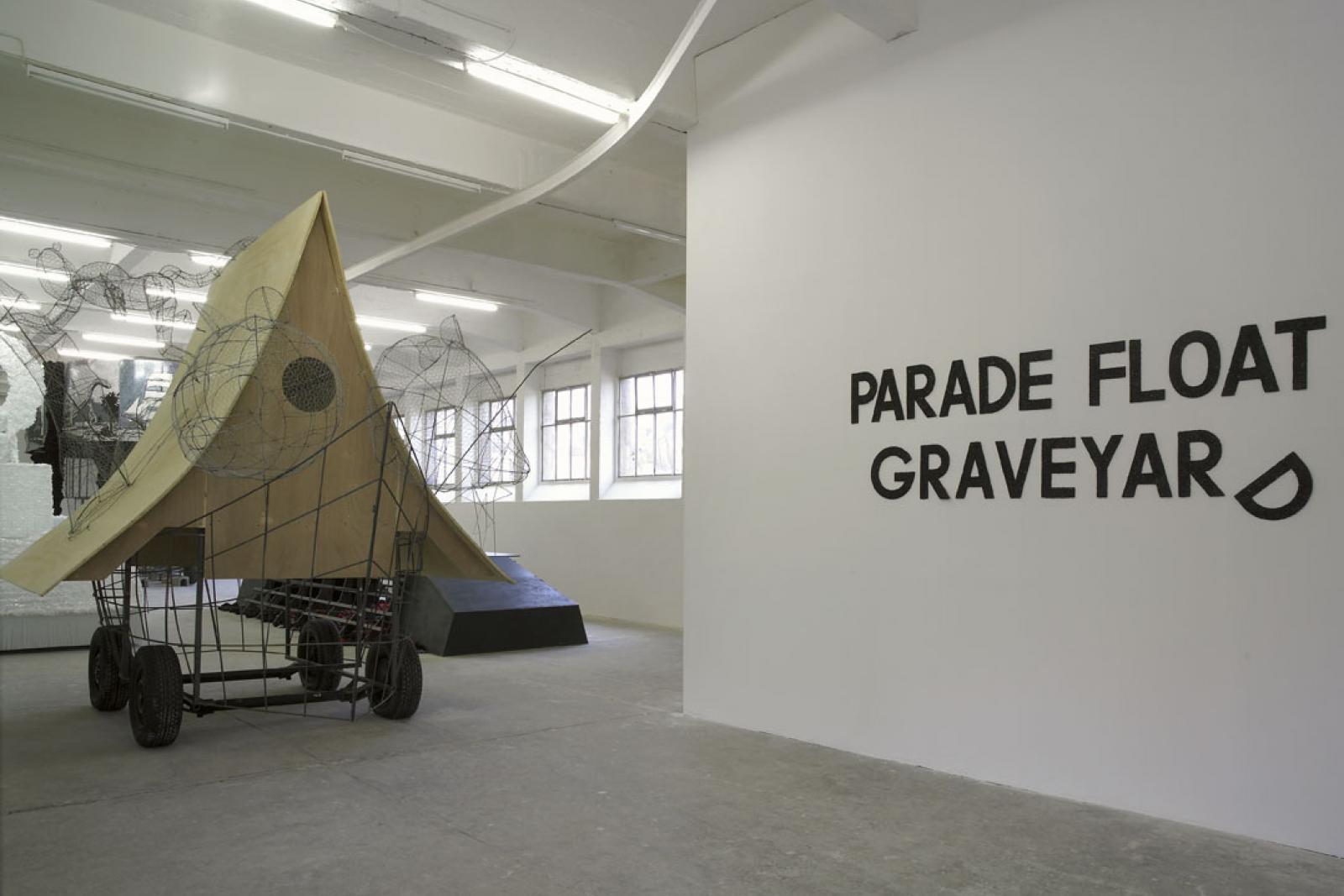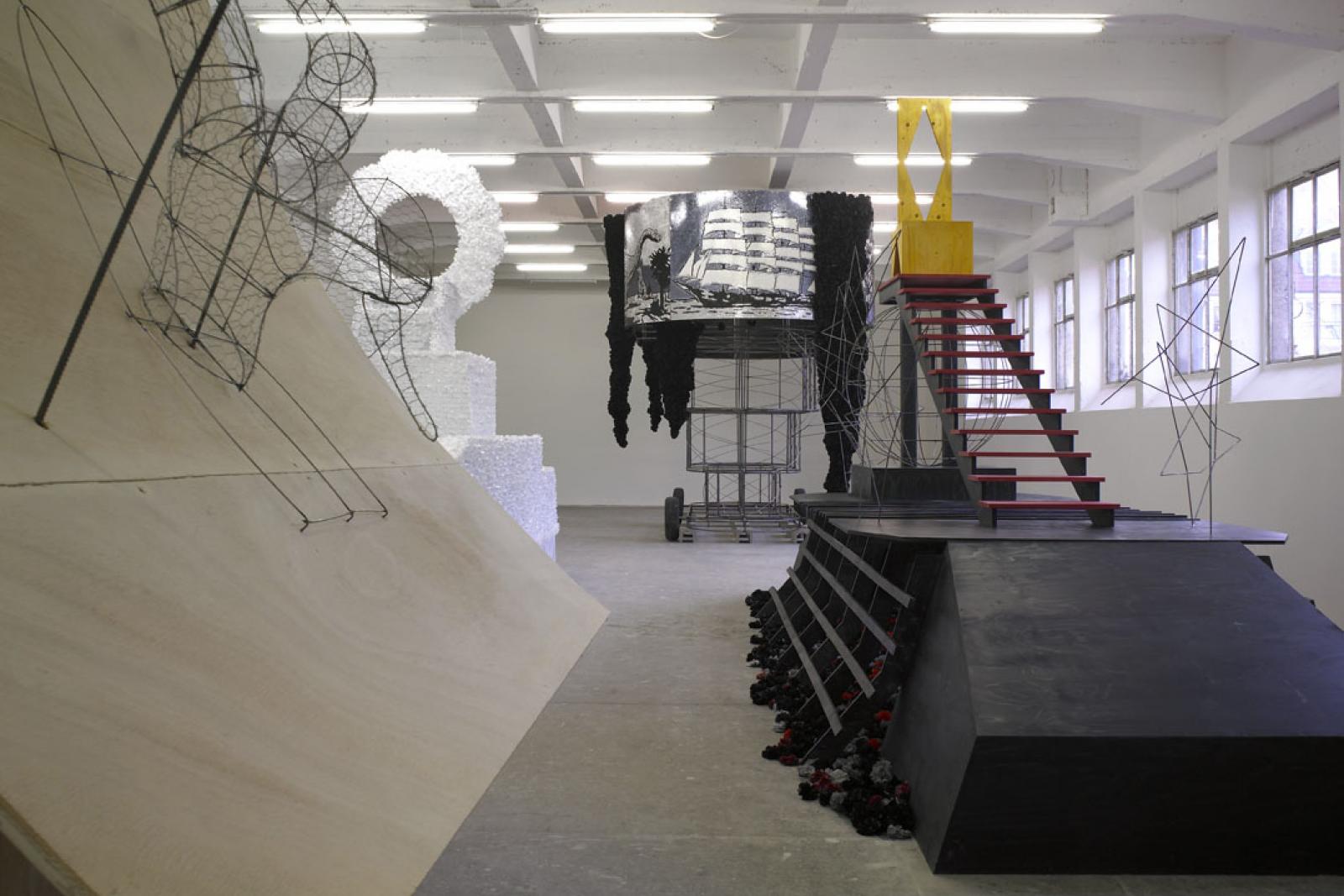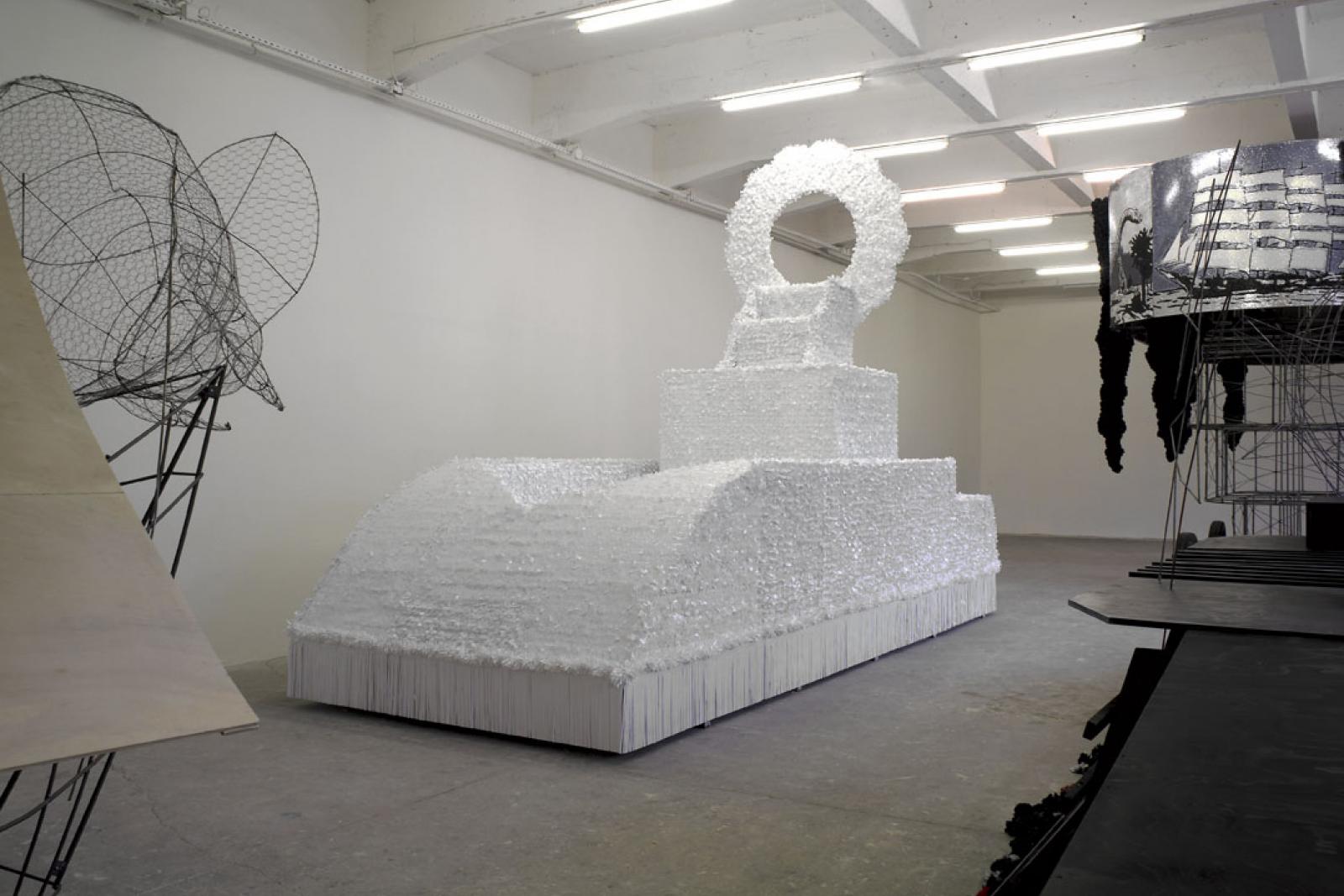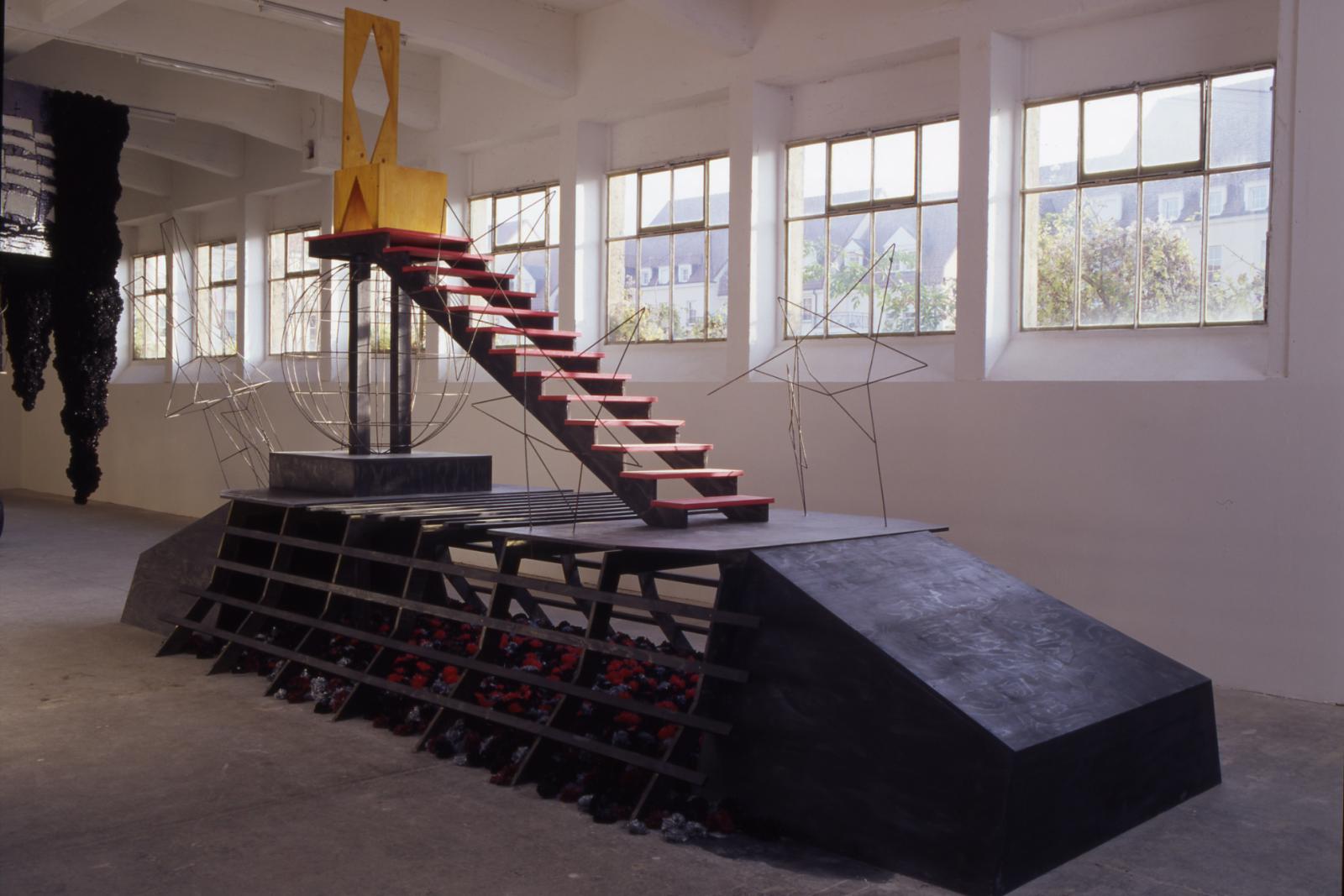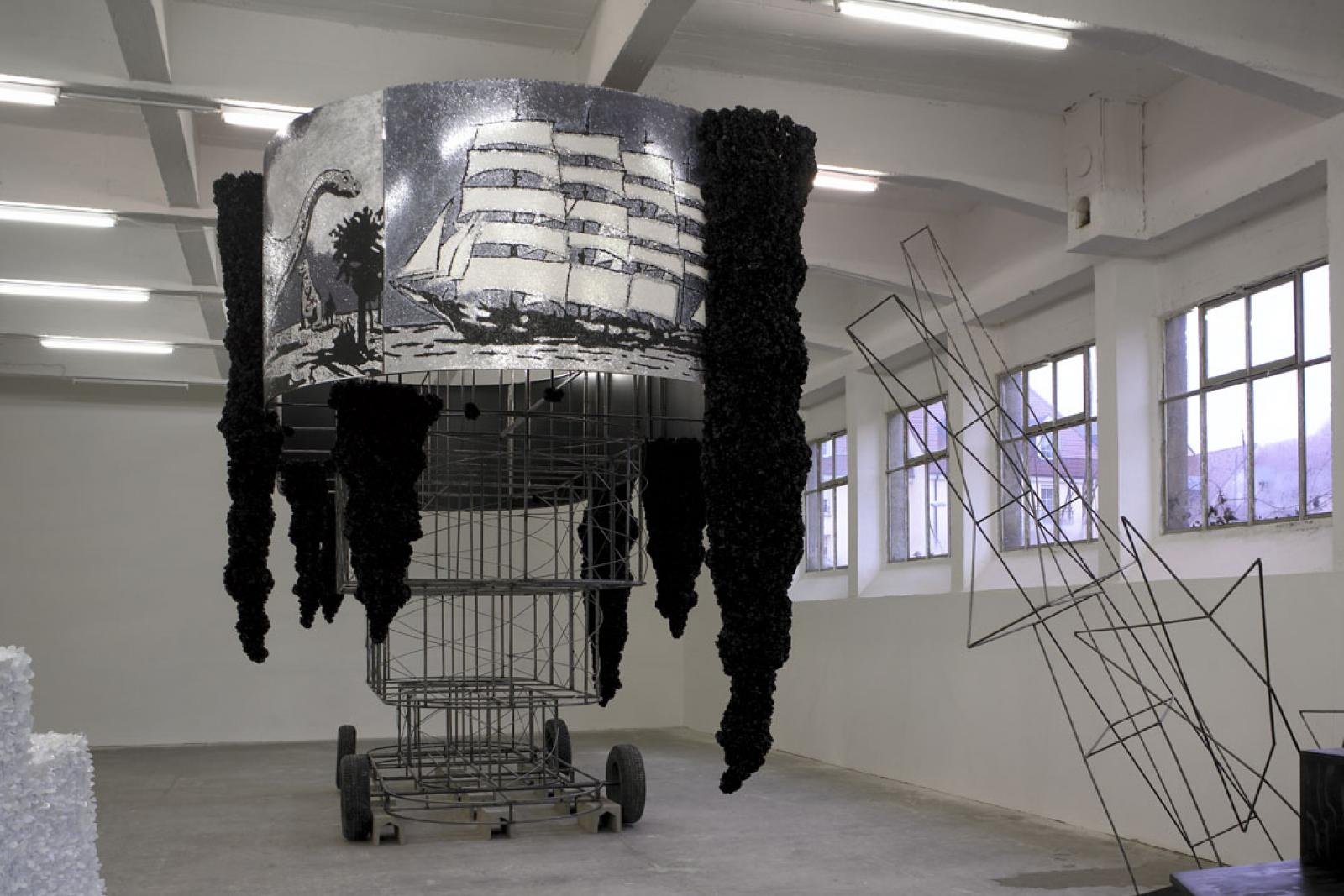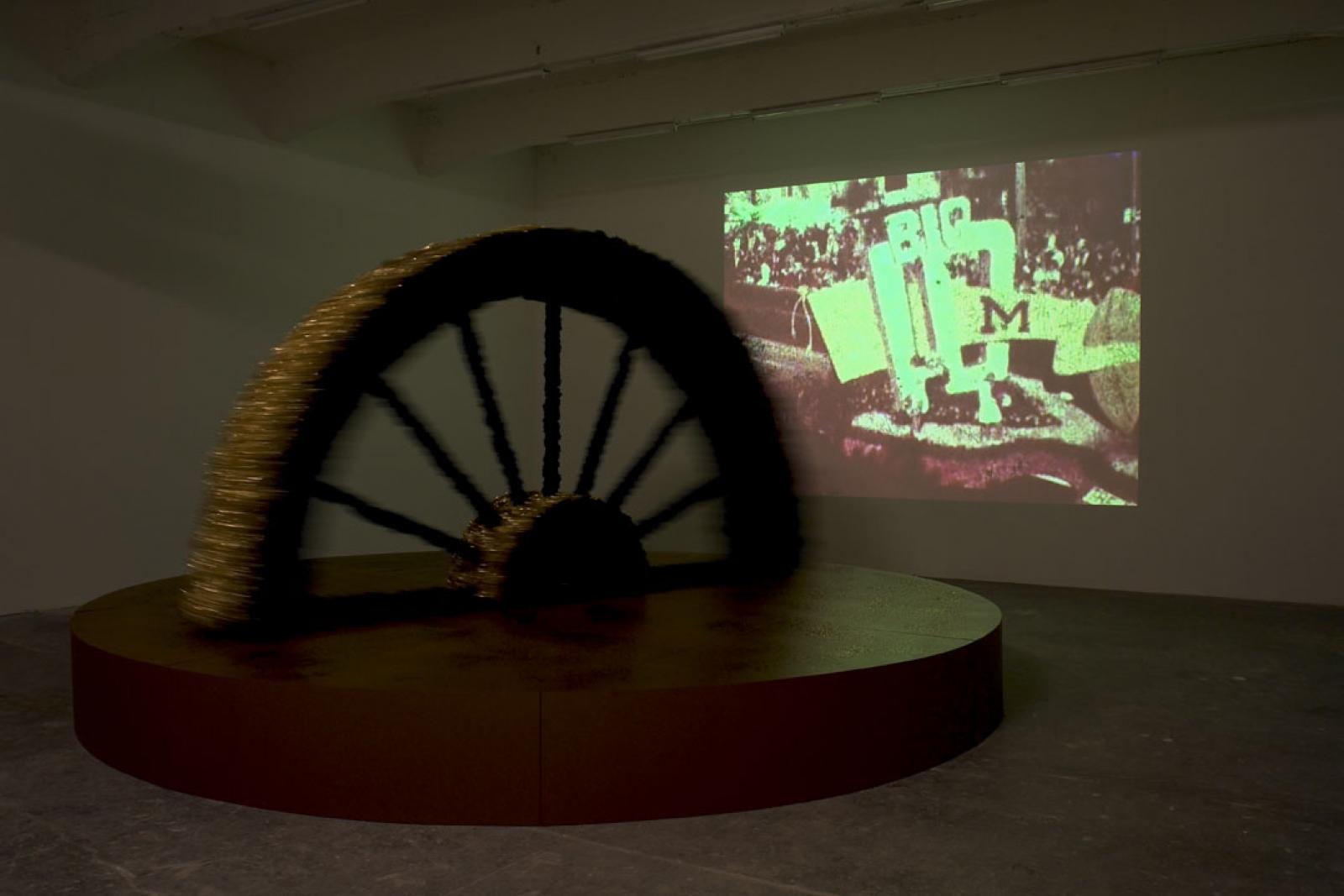Amy O’Neill
Parade Float Graveyard
The Parade Float Graveyard is an ongoing project where parade floats and fragments of floats are recreated from past parades. The collected floats exist in degrees of completion and are dedicated ta the memory of their original forms. To memorialize parade floats aims ta highlight their status as very temporary monuments of popular vernacular culture. There exists thousands of examples to choose from, thus selection is based on two criteria: timeframe and metaphor. The time periods chosen ta focus on, 1950-1980 is considered ta be the golden, silver, and bronze ages for parade floats. During the se 30-years the floats are more ambitious in scale, design and concept than in earlier years without the heavy product advertising that becomes pervasive in the nineteen-eighties. And floats that have been singled out use metaphor ta achieve abstract or apocalyptic effects because these qualities are in contrast with the sentimentality and celebration normally associated with parades. "Ghost Float" is the first float re-constructed for the graveyard. Based on a small town parade design do-it-yourself manual, the theme oft his float is a platform for exhibiting beauty. Covered entirely in bright white decorating material "Ghost Float" gives off a blinding reflection. For opening exhibitions, small caches of ground fireworks are lit. Novel pyrotechnies such as smoke bombs with violet, tangerine, and red dyes; sparklers, "hens laying eggs", charcoal snakes, and roman candles appear on the pristine, decorated, surface as a cacophony of "fire, smoke and noise". During this fireworks display it is difficult ta determine whether the float is sabotaged or possessed.
The second graveyard float "Ethay, Arkway, ofway Oahnay" (pig Latin for The Ark of Noah) is based on a design from the 1968 Rose Bowl Parade in Pasadena, California. Entered into the parade by the fraternal order of Odd Fellows and Rebekahs, the original float, titled "Hark, Hark the Ark," was covered in white and pink chrysanthemums, with a blaze of red roses on the deck. In this reconstructed version, the ark and its animaIs are pared down to skeletal forms and rendered in chicken wire. An archivaI recording that describes the 1968 parade in florid detail plays from inside the hull of the ark. While the ark's original intention was to offer an escape from disaster, this version, stripped bare of aIl decoration, has come to l'est where aIl oId, abandoned floats end up - in The Parade Float Graveyard.
"A Royal Adventure" is the third float in the graveyard. The platform of this float was inspired by a design tailored for a beauty queen and her royal court participating in a 1956 beauty pageant parade. The new version is sparsely decorated with black plastic pom-poms substituting the fresh flowers that once graced the floats surface. Another darkened modification is the emphasis on the queens throne, the original intention as a privileged spot for highlighting reigning beauty is transformed into a seat that rests atop a model of a pillaged looking world. Looming, extra-large, tattered, dirty, stars surround the globe.
Imagined as a double-entendre, float number four, "The Golden West" represents both a half buried wagon-wheel and an expiring sunset. Decorated with golden-fleeced pom-poms and animated by a full 360 degree spinning movement. "The Golden West" could be interpreted as an abandoned fragment from some larger, long forgotten float while a selection of slide images from over 30 years of the most apocalyptic looking rose bowl parade floats are projected onto the walls of the surrounding space.
For the fifth and largest addition ta the graveyard the formai design cornes from Kodak's participation in the 1977 Rose Bowl Parade. Composed of four aval bands stacked on top of each other and ascending in size.
This float gives the impression of a gigantic inverted layer cake. The top tier originally portrayed idyllic scenes of American family life and mimicked film with each scene presented as a photographie frame devoted ta a particular family value. Replacing the original top band of Kodak pictures, the images chosen for the graveyard are re-interpretations of monumentality. Depicted using only white, black, sliver and gunmetal grey glitter, a portrait of Jane Mansfield for example is sandwiched between a be-glittered zeppelin (The Hindenburg) and an equally sparkling image of a flock of seagulls. This float has been re-titled "The Granddaddy of Them All".
Amy O'Neill, 2005
